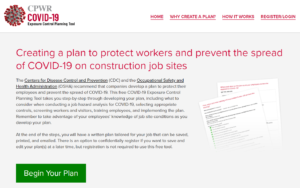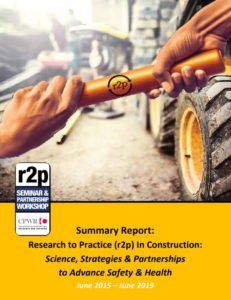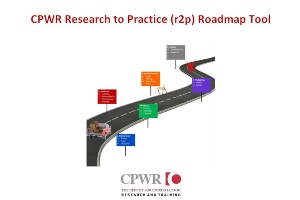CPWR and NIOSH have been hosting a bimonthly webinar series about COVID-19 and the construction industry. There is a lot of information out there and much of it keeps changing, so we use your questions to inform future webinar topics. The full playlist can be found on YouTube, with new recordings added as available.
Join CPWR’s mailing list to stay up to date on the schedule and register for new webinars.

 Safety Climate Assessment Tool (S-CAT)
Safety Climate Assessment Tool (S-CAT)
 This newly revised
This newly revised